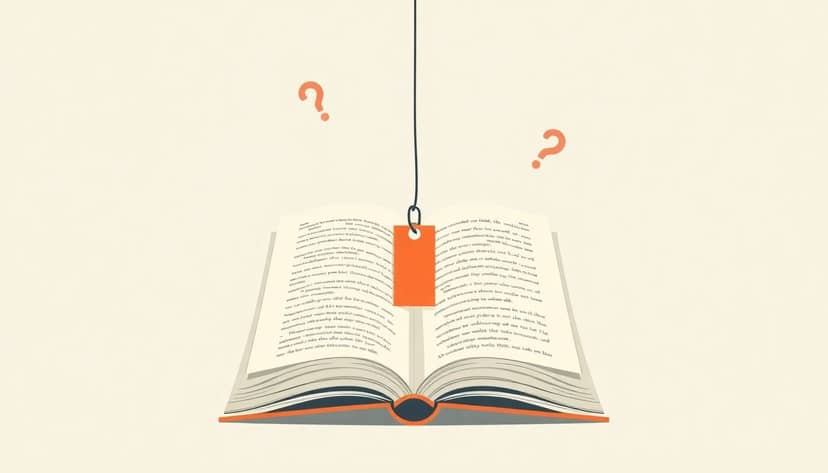Table of Contents
Picking a price for your book feels tricky, doesn’t it? Set it too high, nobody buys; too low, and people question the quality. It’s enough to make any author scratch their head.
But here’s the thing—there’s a whole psychology behind pricing that makes readers eager to click “buy.” Stick around, and I’ll show you simple, proven tricks that’ll give your book price its sweet spot and boost your sales without stress.
Ready for real answers? Let’s jump right into it!
Key Takeaways
- Round prices ($20) suggest premium quality; odd prices (like $19.99) look affordable and boost impulse sales.
- Add higher-priced options or bundles to make standard prices seem like better deals, prompting faster purchases.
- Test odd versus even pricing strategies (for example, $13.97 vs. $14.00)—odd suggests value, even signals quality.
- Separate pricing strategies clearly: ebooks typically $2.99–$9.99; paperbacks $13.99–$17.99 or higher for non-fiction.
- Regularly test price points and adjust pricing strategically around holidays or shopping seasons to maximize sales.

Step 1: Set the Right Book Price Using Psychology
When figuring out how much to charge for your book, it helps to dig into a bit of human psychology. Here’s the thing: readers don’t just see a price—they interpret value based on how that number feels. So your job as an author is to set a price that matches expectations for your genre or topic and also influences buyers’ perceived value.
One quick tip you can use: people tend to perceive rounded numbers like $20 or $50 as premium pricing that signals higher quality. On the other hand, odd pricing like $19.95 or $9.99 makes your book seem more affordable and attractive for impulse purchases.
If your book is non-fiction or a detailed guide—for example, something like a thorough guide on how to get a book published without an agent—don’t hesitate to use premium pricing to reflect its real value and depth. This helps your potential readers realize your book isn’t just fluff.
Step 2: Use Charm Pricing to Increase Book Sales
Ever seen how most prices end with .99 instead of rounding up? This is called charm pricing, and believe it or not, it’s because your brain actually sees $4.99 as significantly cheaper than $5.00, even though logically, it’s just a penny difference. Studies have shown that charm pricing can boost sales anywhere from 24% up to an impressive 60%. Not too shabby, right?
Here’s why charm pricing works: it taps directly into the subconscious mind and tricks it into thinking the price is a better deal. An e-book priced at $3.99 seems noticeably less expensive than one at an even $4.00, leading readers to make quicker purchasing decisions.
To get the charm pricing right, try experimenting with different pricing ending in nine—for example $4.99, $5.49 or even $9.97, and see which works best with your audience. Every reader base is a little different, and even minor tweaks can seriously boost your book’s sales.
Step 3: Experiment with Odd or Even Number Pricing
Here’s another cool trick backed by psychology: pricing your book with odd numbers (like $13.97) or even numbers ($14.00) actually influences buying behaviors differently. Odd numbers tend to signal a discount or a good bargain, appealing most to buyers hunting for value and deals. Even numbers give off a cleaner look, suggesting your book might be a high-quality, premium read.
For example, if you wrote a serious instructional book—say something thorough like how to create an interactive ebook for free—even-number pricing tends to convey an impression of reliability and depth. However, novels, fiction, or casual readers typically respond better to odd numbers, since buyers are often exploring for entertainment and are quick to buy affordable options on impulse.
Don’t assume one strategy works best for everyone; test both approaches and let your readers show you what resonates. A-B testing is fairly easy to do on platforms like Amazon KDP, so adjust your price slightly and monitor closely to find what’s best.

Step 4: Boost Value with Price Anchoring
Price anchoring means listing a higher-priced version of your book right next to the regular priced one, so readers see the regular price as a fantastic deal.
Say you’re selling your ebook at $7.99, and you create a premium bundle version (with bonus chapters, author notes, or extra resources) listed at $14.99—readers will perceive your normal version as much more valuable and affordable.
This mental shortcut makes your regular-priced book seem reasonably cheap, nudging people to buy faster without overthinking.
You can implement price anchoring easily on your website, using side-by-side pricing visuals or by setting multiple pricing tiers on Amazon KDP.
Price anchors tap into the fact that around 67% of shoppers impulsively buy something because it seems like they’re saving money—making it a pretty solid strategy to boost your ebook sales.
Step 5: Guide Buyer Choices with Decoy Pricing
Decoy pricing means deliberately placing an option close in price to your main product—but clearly less attractive—encouraging readers toward the choice you prefer them to pick.
If you’re selling your ebook for $9.99, create a second option at $8.49 that comes without images or additional resources, and an obviously best package at $10.99 including valuable bonuses like worksheets, interviews, or video walkthroughs.
Your readers see that for only an additional dollar, there’s significant value added—so the $10.99 package becomes insanely attractive compared to the cheaper, less impressive $8.49 option.
Decoy pricing plays into human nature, guiding readers to make decisions in your favor without pushing them into spending too much extra.
About 80% of buyers consider a product when presented as a special deal, and this subtle method can increase your book sales noticeably if done right.
Step 6: Communicate Quality Through Premium Pricing
Does raising your book’s price communicate its quality? Yep—because people associate higher prices with higher value and perceived expertise.
If you wrote a comprehensive, detailed reference guide, like something teaching people how to publish a graphic novel, going premium can position your book as authoritative, trustworthy, and in-depth.
Premium pricing sends a quick message that your book isn’t just another casual weekend read—it’s valuable enough for them to invest in.
For example, instead of pricing your guide at $4.99, try going higher, like $17.00 or $25.00—rounded numbers effectively indicate that you consider your content serious and useful.
One piece of advice: use premium pricing when it really fits your niche, expertise, and audience expectations—otherwise you risk having readers think you’re overpriced rather than high-quality.
Step 7: Choose Pricing Strategies for E-books and Print Books
Okay, so what’s better: pricing your ebook cheaply for volume sales or keeping your print books priced higher?
In truth, you need to strike a clear distinction between these formats since buyers have totally different expectations.
Generally speaking, ebooks sell best when priced between $2.99–$9.99 (especially on Amazon KDP)—keeping the price low where plenty of impulse buyers and readers searching for deals feel comfortable.
Meanwhile, print books often demand higher prices—an average fiction paperback goes anywhere from $13.99–$17.99, and nonfiction guides can easily go $20 or higher to reflect their depth and research.
If you’re unsure how long a typical ebook should be, take a look at this guide on how long should an ebook be to help match your pricing to your ebook’s length and niche.
Step 8: Avoid Pricing Mistakes That Hurt Book Sales
Here’s the thing: even tiny mistakes when pricing your book can tank your sales quicker than you’d imagine.
One common screw-up: blindly pricing your book according to the competition without analyzing your audience’s exact preferences and buying behavior.
Another pitfall: setting your book permanently discounted instead of occasionally running specials—constant low prices eventually lead people to perceive lower value.
Instead, rotate occasional discounts, seasonal promos, or bundles to create urgency and keep your audience interested.
Lastly, avoid super complex pricing setups—making people jump through hoops or compare complicated pricing plans turns casual browsers away for good.
Step 9: Test Book Prices Regularly for Better Profits
You know the saying: “Set it and forget it”? Yeah, that advice definitely doesn’t apply to pricing your books.
You need to periodically test different prices to find the sweet spot your readers respond to best.
Try shifting your prices gradually $1–$3 up or down, and track your sales over a few weeks to pinpoint what price sparks the most action.
Many self-publishing platforms like Amazon KDP have built-in tracking and analytic tools to make this testing super straightforward.
Regular testing isn’t optional—it’s a must to make sure you’re squeezing maximum profit from every single book sale.
Step 10: Adjust Prices During Peak Book Buying Seasons
Finally, always remember to capitalize on book-buying seasons—like holidays, Black Friday, New Year resolutions, summer breaks—by adjusting your prices strategically.
Offer limited-time deals or bundles around major shopping events (like winter holidays or back-to-school season).
If you’re an author with some seasonal content like holiday-themed stories or winter writing prompts, use temporarily discounted promotional pricing to draw in impulse buyers looking for something timely.
Seasonal discounts can drive huge spikes in sales since buying activity naturally peaks during holidays, making your limited-time promotions even more effective.
Carefully planned sales during these periods not only boost immediate revenue but can grow awareness, reader loyalty, and long-term sales impact.
FAQs
Charm pricing is pricing your book just under a round number, like setting it at $9.99 instead of $10. This subtle difference makes the price seem smaller to buyers, often resulting in increased sales.
Price anchoring puts your book next to a more expensive option, making yours appear affordable. Offering one higher-priced book alongside yours encourages buyers to perceive your title as great value, boosting sales.
Usually, yes. Readers typically expect ebook prices to be lower due to lower production and distribution costs. Pricing your ebook below the print version helps meet customer expectations and can increase overall sales volume.
Common pricing missteps include setting the book price too high, underestimating the perceived value, inconsistent seasonal adjustments, or frequently changing prices without clear strategy, all potentially discouraging readers and negatively impacting sales.



